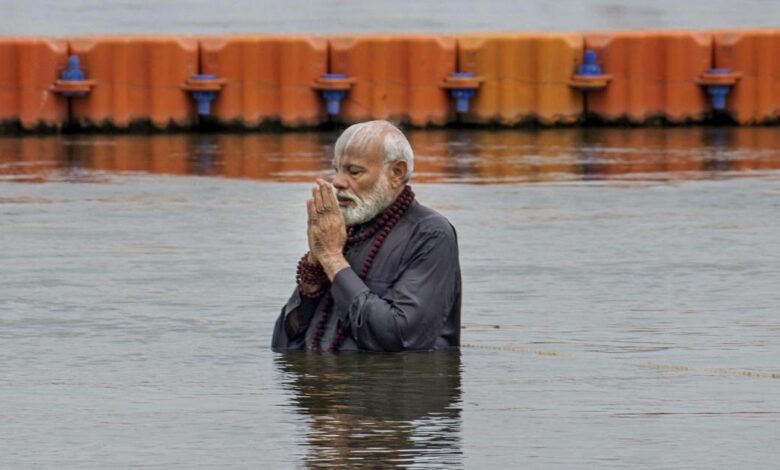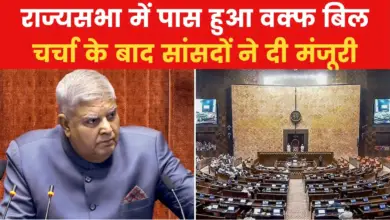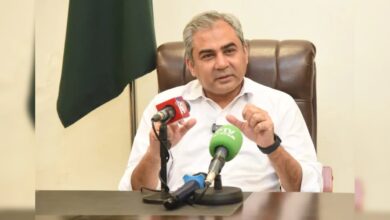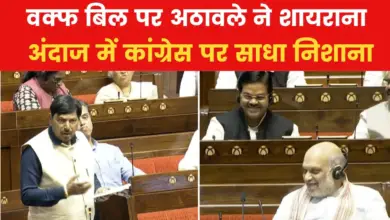When Indira Gandhi reached Kumbh with Shastri’s ashes… When ‘political dip’ became the center of discussion from Nehru to Modi – mahakumbh 2025 When Indira Gandhi reached Kumbh with Shastri ashes political dip became the center of discussion from Nehru to Modi ntcpas

It was in 1942 when the then Viceroy Lord Linlithgow had arrived in Prayagraj to witness the Kumbh Mela. He was surprised to see a crowd of lakhs of people on the banks of Ganga. He asked Madan Mohan Malviya who was accompanying him that such a crowd, such a big event… a lot of money must have been spent for this? On this Malviya said that yes only two paise has been spent. The Viceroy expressed surprise and asked, “Are you kidding?” Then Malviya took out a calendar of two paise from his pocket and said that the date of bathing in Ganga was written in it. People see this and come on their own. No one has to be invited for this. This is a flood of faith…
Once again preparations for Mahakumbh are going on in Prayag. Lakhs of people are expected to arrive. The legends, beliefs and stories of Kumbh are passing before your eyes every day. Actually, the history of beliefs of Kumbh is found in Vedas, Puranas and many historical books. But there is also a political aspect of this Kumbh, which needs to be mentioned…
When Kumbh became a ‘symbol of rebellion’
Even before independence, a huge crowd of believers was seen in the Kumbh. Even during the Mughal rule, thousands of people used to attend Kumbh. The Mughal rulers feared that the huge crowd of this Kumbh might lead to voices of protest. Therefore, he tried many times to impose strictness on Kumbh.
For example, before the Mughal period, Taimur had killed hundreds of people on the banks of Ganga in Haridwar in 1398. Taimur has mentioned this in his autobiography ‘Tuzuk-e-Taimuri’.
Even when the time of the British came, this fear remained. The British also always felt that their rule could be in danger due to Kumbh. Therefore, he also made many efforts to stop it. Sometimes the train was prohibited and sometimes other restrictions were imposed. But the flood of faith did not stop. Seeing this hatred of the British towards bathing in Ganga, Mahatma Gandhi took Sangam bath in Prayagraj in 1918. However, it cannot be denied that Kumbh has raised many demands for change.
‘Political experiments’ of Kumbh in independent India
The political experiments of Kumbh after independence cannot be denied. Famous author James Lochtefeld says in his book on Kumbh that in the 18th and 19th centuries, Kumbh was seen from a business point of view. But in the 20th century it has also been used politically. Efforts were also made to make it global.
Historian Kama Maclean claims in her book that after independent India, political personalities started participating in Kumbh. It started with the first Prime Minister of India, Jawaharlal Nehru, who visited the Prayag Kumbh Mela in 1954. Nehru had also written, ‘I have been fond of the Ganga and Jamuna rivers since childhood and as I grew up, this attachment also increased.
Also read: Where do Naga Sadhus come from in Kumbh, how do they become and what is their tradition, know the whole story
Nehru’s Kumbh visit was much talked about at that time for another reason. In fact, a day after Nehru reached Kumbh, there was a stampede in Prayag, in which hundreds of people lost their lives. There are allegations that Nehru had hidden the death toll and such a big accident had happened due to mismanagement. Narendra Modi has cornered Congress by mentioning this incident even in his election rallies. After this accident, Nehru had advised big leaders to avoid going to Kumbh. But his advice did not last long.
When Indira Gandhi arrived with the ashes of Lal Bahadur Shastri
This incident happened in 1966, when due to some controversies after the Kumbh held in 1965, the Kumbh Mela was organized again in Prayag in 1966. But at the same time a big incident happened in the country. Prime Minister Lal Bahadur Shastri died in Tashkent. After that, amidst all the political developments, Indira Gandhi became PM. But many questions were being raised regarding the mysterious death of Lal Bahadur Shastri. Meanwhile, Indira Gandhi had visited Prayag Sangam. The date was 25 January 1966. It is said that during this time, Indira Gandhi reached Sangam and immersed the ashes of Lal Bahadur Shastri in the Ganga. Shortly after this, he gave an emotional speech while addressing a big rally in Allahabad.
In this speech, Indira Gandhi had said that Shastri’s death had left her orphaned. He had said that after the demise of his father Nehru, Shastri’s death was unbearable for him. But she had promised the public that she would make Shastri’s dream come true.
This step of Indira Gandhi proved to be a masterstroke in her initial politics. It is said that then many saints including Devraha Baba claimed about Indira Gandhi that she would remain in power in the country for a long time.
When Kumbh gave a new identity to Jai Prakash Narayan
Kumbh was organized in 1977 after the Emergency. At that time a new political wave was going on in the country. There was a tremendous atmosphere against Indira Gandhi. Jai Prakash’s Janata Party was in the news. Meanwhile, JP took bath in Kumbh. During this the saints approved the name of JP. In many Sadhu conferences, Indira was described as the enemy of the country. These messages created a wave in favor of JP and Janata Party in the entire country.
Also read: ‘All Muslims are our brothers, but those who corrupt the religion should not come’, said the President of Akhara Parishad regarding Mahakumbh.
When a new ‘political wind’ blew from Kumbh in 1989
Kumbh was being organized in 1989 at a time when Rajiv Gandhi’s government was completing 5 years in the country. The government was surrounded on many issues. Hindu-Muslim politics was gaining momentum.
British author Mark Tully, while mentioning this Kumbh event in his book ‘No Full Stop in India’, tells how the issue of Ram temple in Ayodhya had heated up from here. The organization of this Kumbh also played a decisive role in strengthening the political identity of BJP.
When Sonia took a dip in Sangam
It was the year 2001 when Congress leader Sonia Gandhi had reached the Kumbh Mela. During this time he also took a dip in the Ganga. Many questions were raised regarding this Kumbh Yatra of Sonia Gandhi. At that time there was NDA government in the country. Many people argued that Sonia Gandhi took a dip in the Ganges to change her anti-Hindu image. During this time, many leaders including Atal Bihari Vajpayee had come to organize the Kumbh.
Project given to Modi in 2013
In 2013, Kumbh was organized in Prayagraj. This was the period when Gujarat CM Narendra Modi was trying to create a new identity for himself in the country’s politics. There was tremendous opposition in the country against the UPA government. Meanwhile, the saints had projected Narendra Modi’s name from the Kumbh. After this, Narendra Modi’s name started leading in the race from BJP. Modi’s popularity got strengthened across the country.
Modi took a dip in Kumbh in 2019 also
Narendra Modi had participated in the Ardh Kumbh held in 2019 as Prime Minister. This Kumbh took place at a time when general elections were about to be held in the country. Modi faced the challenge of coming to power for the second consecutive time. At such a time, PM Modi had taken a dip in the Ganga. Which helped in enhancing his political graph. At that time, many media reports had claimed that PM Modi’s Kumbh visit could help him in the elections.
At present, Mahakumbh is going to be organized once again in Prayagraj from 13th January. Preparations are being made on a large scale. Both state CM Yogi Adityanath and PM Modi are appealing to the people to participate in this event. But it remains to be seen whose dip in the Kumbh this time will give him a ‘new political’ identity.




